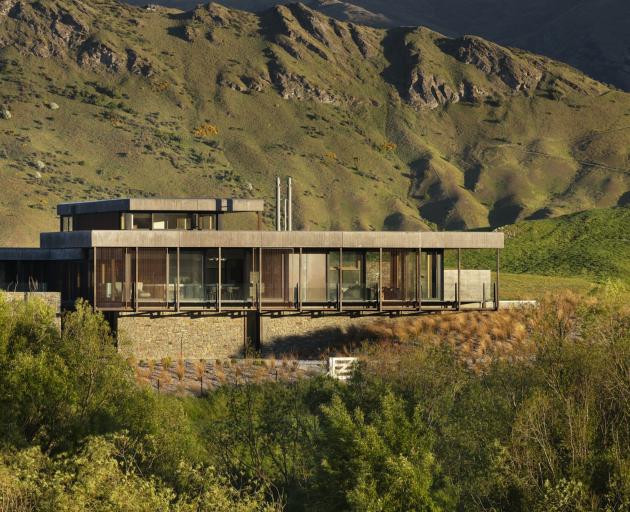As winter bites, this home on the crest of a small hill near Arrowtown remains cosy. Kim Dungey reports.
Some people building new homes have long wish lists, but the owners of this house started with something more succinct.
Sian Taylor and Mark Read, of Team Green Architects, say the New Zealand family, recently returned from living in Australia, brought them the "most impressively concise brief" they had ever had.
"It was a series of words which included ‘timeless’, ‘sustainable’ and ‘textural warmth’," Taylor explains. "It didn’t go into any specifics about number of rooms or must-haves. It really was unique."

"The main living area was to be a viewing platform, enjoying the 360-degrees views. The family room ... needed to be more cosy and secluded. The master suite was to be separate from all the other spaces, and became the ‘eagle’s nest’ on top of the building."
Arranged over three storeys, with each level bedded into the hill, the Speargrass Flat home boasts stunning views of Coronet Peak in one direction and The Remarkables in the other.
Taylor says it is big, at 680sqm plus 250sqm of terraces and balconies, but there is no area that is not used.
A combination of Corten steel, shuttered concrete and schist allows the house to merge with the landscape and requires little in the way of maintenance. "Spine" walls of schist continue inside; the interior timbers include American white oak and richly toned Western red cedar.

The triple-glazed curtain walling system and the design of the Nuralite "warm roof" were firsts for New Zealand, while Proclima products were used in new ways to create an airtight envelope with appropriate moisture migration for several different wall constructions. A ventilation system ensures fresh air circulates through the airtight home.
The two fireplaces — one in the living room and the other in the master suite — are more for ambience than heating.
"Although it is not a passive house, it has used thermal bridge-free detailing, high insulation levels, European triple-glazed windows and airtightness to create a home which uses approximately 20% of the energy of the same house if it was designed to the New Zealand Building Code," Taylor says.
"It’s warm throughout the year and the same temperature throughout the house, whether you are standing next to a window or in the centre of a room."
Oliver’s Ridge House delighted its owners, but was also a special project for the architects. The site used to be part of a farm owned by Mark Read’s grandfather and was where his mother grew up.


















